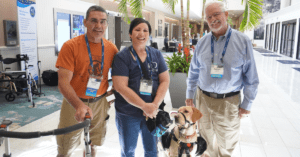Let’s chat about Clinical Trial Readiness with a focus on Ataxia. Clinical trials ensure that treatments are safe and effective before they gain approval for widespread use in humans. Clinical trials test new treatments and therapies including: new drugs, different use for an already approved drug, medical devices, new treatment/therapy combinations, and so much more. Clinical trials can also evaluate which treatment is the most effective for disease and different disease variations. Clinical trials can focus on new ways to relieve, remove, or treat various symptoms. They can also help investigators and providers find new ways to detect and diagnose disease. Clinical trials can vary in length, anywhere from a few months to several years to complete.
Pre-Clinical Trial Steps
- Before a clinical trial can be initiated in human volunteers, scientists spend months to years studying and testing treatments in a laboratory using cell and animal models.
- Then, this research is submitted to the FDA for approval to begin a clinical trial.
- Investigators submit an Investigational New Drug (IND) application to the FDA.
- What does the IND include?
- How the drug is made, who makes it, ingredients, and more
- Results from the investigator’s research
- Plans for the clinical study including protocols, informed consent forms, risk assessments, agreement for IRB (Institutional Review Board) approval, and more
- More information on Informed Consent Forms: Informed Consent Forms
- Details on the investigators to ensure they are equipped to run a clinical trial
Phase I: Safety
Phase I is the first phase in most clinical trials. In this phase, a small number of participants are enrolled, and safety is a top priority. This phase has the most associated risk but has the potential to help.
- The goals in Phase I are to find out the best dose amount for a new treatment for the best result, discover any side effects of a new treatment, and the best way to give the treatment
- Safety is a top
- Extra monitoring, tests, and smaller doses are used.
- There are a small number of participants in Phase I (typically 20-80 volunteers)
- Placebos are not typically used.
Phase II: Efficacy
Once treatment has successfully gone through Phase I and is determined to be safe, Phase II begins. Phase II addresses how well a particular drug or treatment works. For example, is it effective in relieving dizziness, or does it improve the Ataxia patient’s quality of life?
- A larger group of patients enrolled in Phase II studies (typically 100-300 volunteers).
- Dosage varies.
- Placebos are still not utilized
- More information on Placebos: Placebo-Controlled Trials
- Side effects are uncovered
- Placebos are still not utilized
Phase III: Comparison to Current Treatments
If the treatment in Phase II benefits enough patients, then the trial moves onto Phase III. Phase III has two main goals: first, to ensure that the findings in Phase II remain valid, and second to compare against current treatments available.
- Study participants are often randomly assigned to one treatment.
- Sometimes, neither the investigator nor the patient is aware of which treatment is used (blinding).
- To learn more about blinding and randomization: Explaining Randomization in Clinical Trials
- Phase III usually involves a large number of participants (anywhere from 300-thousands of volunteers).
- Offered in a larger geographical area
- Typically, the most prolonged phase in a clinical trial; lasts up to several years.
- Side effects are monitored closely, and the treatment could be terminated if deemed necessary.
- Sometimes, neither the investigator nor the patient is aware of which treatment is used (blinding).
















